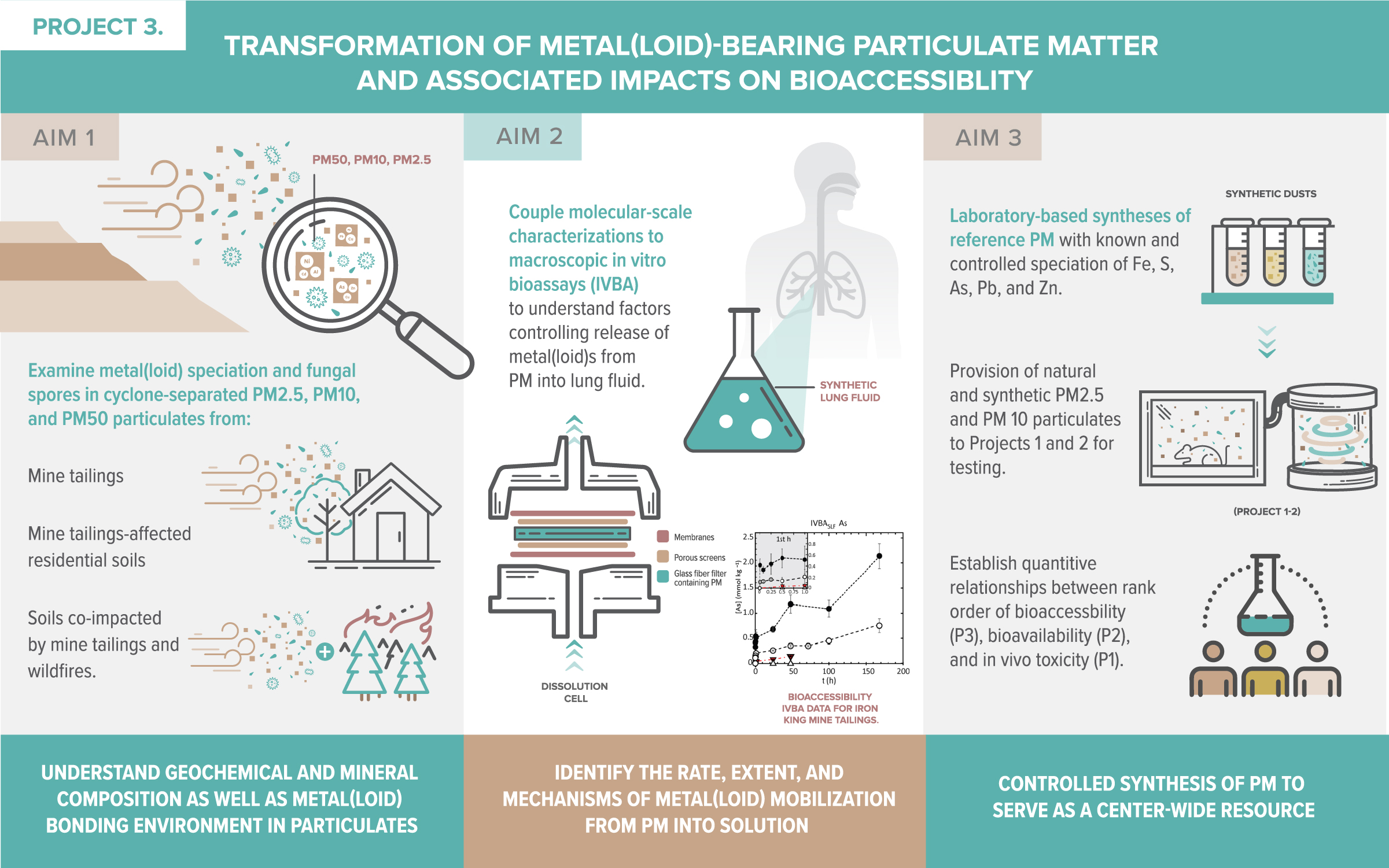PROJECT 3: Transformation of Metal(loid)-bearing Particulate Matter and Associated Impacts on Bioaccessibility
Project Leaders
UA SRC Project 3 Lead
UA SRC Project 3 Co-Lead
UA SRC Project 3 Co-Lead
Summary
Mine tailings wastes are continuously generated and deposited at the land-surface where they serve as point sources for airborne particulate matter (PM). As mandated by the Clean Air Act, the U.S. Environmental Protection Agency (EPA) has established regulatory standards for PM of <2.5 μm (PM2.5) and <10 μm (PM10) that indicate the maximum PM concentration to be present in outdoor air irrespective of PM composition. The health risks associated with PM from mine tailings (mt-PM) are greater than for most other sources because they contain elevated concentrations of toxic metals and metalloids, such as arsenic, lead, cadmium, and zinc. These toxic metal(loid)s occur as surface-adsorbed molecular species or as atoms co-precipitated into a wide range of crystalline and amorphous structures. The local bonding environment of a metal(loid) in a given particle – also known as its molecular speciation – is defined by its oxidation state, coordination number, and nearest neighbor atom composition. These nanoscale characteristics change over the course of mt-PM diagenesis because of climatic forcing and local biogeochemical conditions. Furthermore, as tailings undergo weathering, toxic metal(loid)s are enriched in smaller, neoformed particles that are more susceptible to aerosolization than the originally-deposited mt-PM. The mt-PM also contain redox active species, such as iron, that can generate reactive oxygen species in vivo. We hypothesize that weathering-driven alterations in molecular speciation of metal(loid)s in mt-PM controls their bioaccessibility, bioavailability, and toxic effects during inhalation exposure, which is the primary exposure pathway being studied in the UA DUST Center. We further postulate that mt-PM transport into adjacent residential soils and into ecosystems subject to wildfire (with increasing frequency under climate change) leads to increased human health risk for proximal communities. These communities are thereby subject to accumulation of multiple sources of a contaminant in a single site (i.e., “toxic layering”). The Project 3 team will isolate fine mt-PM size fractions from a climate sequence of Superfund sites, as well as PM from nearby residential soils and wildfire-impacted ecosystems, to test these hypotheses using advanced analytical methods of PM characterization coupled to a novel flow through in vitro bioaccessibility (IVBA) reactor design. Metal(loid) molecular speciation will be characterized before, during and after IVBA reaction using synchrotron-based X-ray absorption spectroscopy (XANES and EXAFS), whereas other parameters (geochemistry, mineralogy, size, shape, element distribution, etc.) will be measured using wet chemistry, X-ray diffraction, electron microscopy, dynamic light scattering, and micro-focused X-ray fluorescence spectroscopy. Well characterized PM from Project 3 isolations and laboratory syntheses will be provided to Projects 1 and 2 for their in vitro and in vivo analyses, thereby enabling cross-center correlations among bioaccessibility, bioavailability, and toxic effects and their relation to molecular speciation of PM.


